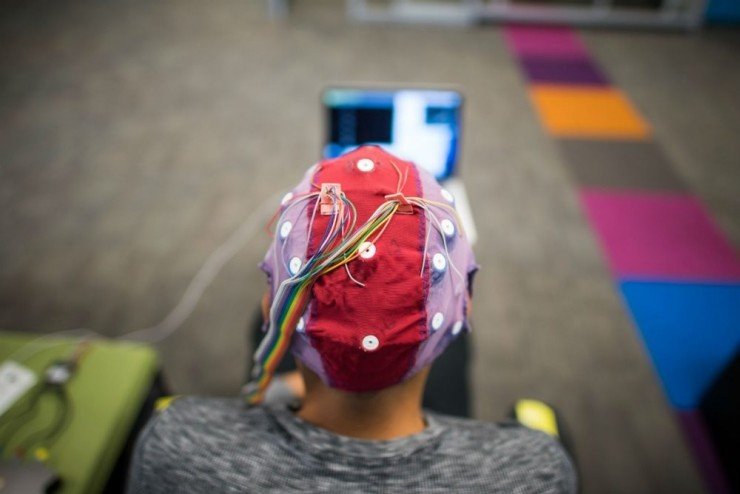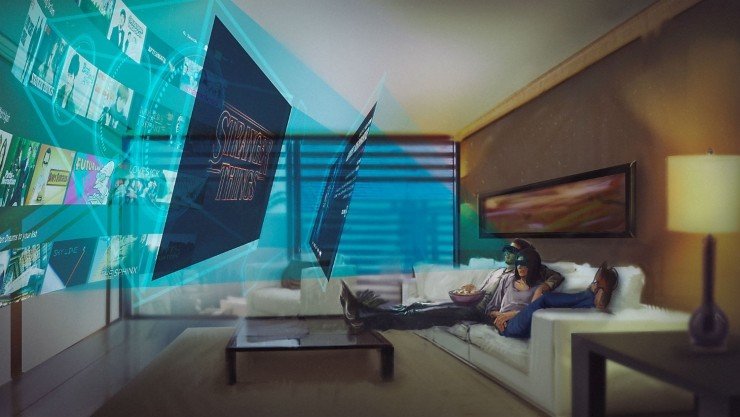In the future with Mixed-Reality, technology observers generally believe that it will be exciting and exciting, but unfortunately they will not see it for the rest of their lives. This is not only because of technical obstacles such as frame rate and position tracking. Mixed reality is even more challenging for designers, artists, and storytellers who give meaning to the digital experience.

The challenge faced by contemporary developers is to deeply understand the direction of migration of personal technology styles. From Oculus Rift to Apple Watch to Snap Spectacles, the overall trend is moving toward wearable computing. Putting a face in front of the mixed reality is a very tricky question: How do you set up human-computer interaction after wearing your head on your face?
The PC industry also encountered similar problems in the evolution process, so it can give us some inspiration. Since the commercial use of computers in 1946, the most critical insight on the graphical user interface (GUI) has been to make computing more private, practical, and intuitive. Time has proven that mouse-based GUIs are so efficient that even after the Macintosh was born in 1984, it was still the interface for mainstream computing devices.
Today's mixed reality devices are like IBM in the 1970s. Enterprises have seen endless potential. Core enthusiasts are madly trying, but ordinary users still cannot access core technologies. Therefore, mixed reality human-computer interaction requires a change similar to GUI.
As one of the thought leaders of this topic, neuroscientist and entrepreneur Meron Gribetz created Meta and served as CEO of the company. At present, Meta is developing an augmented reality (AR) device to maintain the same alliance with Microsoft and Magic Leap. When talking about this device, Gribetz always likes to call it a "zero-learn curve" computing device because it is so intuitive that you don't need to learn to know how to use it. The inference that is implied in this type of machine is that the device must become an extension of the brain. This also provides a breakthrough for the brain-computer interface to redefine how humans interact with the world around them.
Earlier, scientific research experts have begun to conduct research in this area. In 1924, brainwaves were first discovered by humans; in the 20th century, the University of California’s research experts popularized the Brain-Computer Interface (BCI) terminology, especially those that use brainwaves to control objects. Hardware and software systems. Although BCI has been widely used in medical devices, the potential of wearable computing devices is now fully realized.
Current limitations
Given the current most common applications of augmented reality (AR) include: work and productivity, construction, industrial assembly, transportation, sports, military and law enforcement, etc., all of these applications involve a dynamic environment that can deeply appeal to users. Can current AR equipment simplify or complicate these environments? For example, how do you let construction workers operate “smart helmets†while using tools or operating heavy machinery? How can you enable soldiers to carry equipment and keep radio communications through AR? Head display for fast navigation?
These scenarios all reveal the limitations of existing ways of interaction. Gesture control means that the operation of both hands is indispensable, and the voice commands are very embarrassing in public places, and in a noisy environment often cannot hear the command you issued normally. Although each method has its own advantages, their cumulative effect is to create input languages ​​for users to master. We should all expect that this obstacle will significantly slow down the popularity of AR equipment. The best solution is to create a brain-computer interface that only uses the brain activity to scroll through menus, select icons, enable applications, and even enter text. It is conceivable that this high-performance, non-intrusive and intuitive brain-computer interface will release AR's productivity revolution.
Cognitive overload
In addition to simple input commands, BCI will solve another problem with mixed reality: the inevitable cognitive overload. Mixed reality may potentially be an incredibly feature-rich environment, imagine a 3D network world without advertising shielding.
Users are most likely overwhelmed by too much information. By using adaptive interfaces and software that only show the most relevant information based on the user's physiological characteristics, the brain-computer interface can reduce cognitive overload. Finnish researchers are experimenting with brainwave analysis as a means of content management.
VR can also benefit from drastically reducing the real "existence" barrier. Consider this is two different game players: one is to create and apply magic through thought; the other is to use the joystick's joystick button to perform the same action. The authenticity of the VR environment is different for both. If you want to survive in the dream world of the Jedi Knight, the Oculus Touch handle won't make you feel "forced." The brain-computer interface is necessary in constructing VR to promise our revolutionary experience.
Despite the growing interest of large technology companies, the business applications of brain-computer interfaces are costly and unrealistic. For example, a popular brain-computer interface system is usually based on electroencephalography (EEG), which confirms the user's intention by measuring the waves in the brain. EEG-based brain-computer interfaces typically cost tens of thousands of dollars and require gelling to improve signal quality. These technologies should not be expected to appear on Best Buy's shelves in the short term.
The next step

However, pioneering companies such as Emotiv and Interaxon have introduced entry-level head-starts to the market, offering Mindfulness training to increase your meditation skills or concentrate on your work. The most representative of these startups is Halo Neuroscience, which uses a brain-aware device for professional sports teams to improve athletes' daily training through neural feedback. Although these applications are a bit narrow, it also shows that consumer-oriented neuroscience is becoming more practical and the price will be closer to the people. The brain-computer interface for the consumer market may be earlier than we expected.
It is not difficult to see that devices that make our homes and desks seem chaotic will eventually become extinct. Now our common smartphones, tablets, laptops, and TVs may all be replaced by a wearable device in the future. And its shape will become smaller and smaller, from the current bulky head-mounted devices to lightweight glasses, and may even be contact lenses that can project light directly onto the retina. However, as these devices become smaller and smaller and the portability continues to increase, the challenges of interaction become more and more difficult, and the brain-computer interface is undoubtedly the best solution.
Under the background of augmented reality and virtual reality headlines gradually emerged, the brain-computer interface became the milestone of the next change in the evolution of technology. Their arrival will completely change our relationship with personal technology. Visual immersions have made great progress in 2016, but in 2017 user interaction needs to usher in changes, otherwise the mixed reality still only stays in news reports.
Embedded industrial flat panel display, optional 10.4 "to 19" LCD screens, 50,000 hours long-life LED backlight, support for multiple signal input interfaces, including VGA and Video, special requirements can increase DVI and HMI interfaces; front Panel OSD keys and USB interface are convenient for control and maintenance; support DC 12V power input, special requirements support DC 9 ~ 36V wide voltage input; suitable for harsh work in industrial fields such as factory automation, machinery manufacturing, numerical control equipment, textiles, communication, and power surroundings.
flush mount monitor,flush mounted display,panel mount displays,panel mount monitors,industrial panel mount monitors,panel mount touch screen monitors
Shenzhen Hengstar Technology Co., Ltd. , https://www.angeltondal.com
